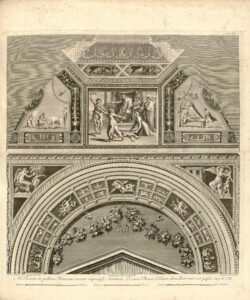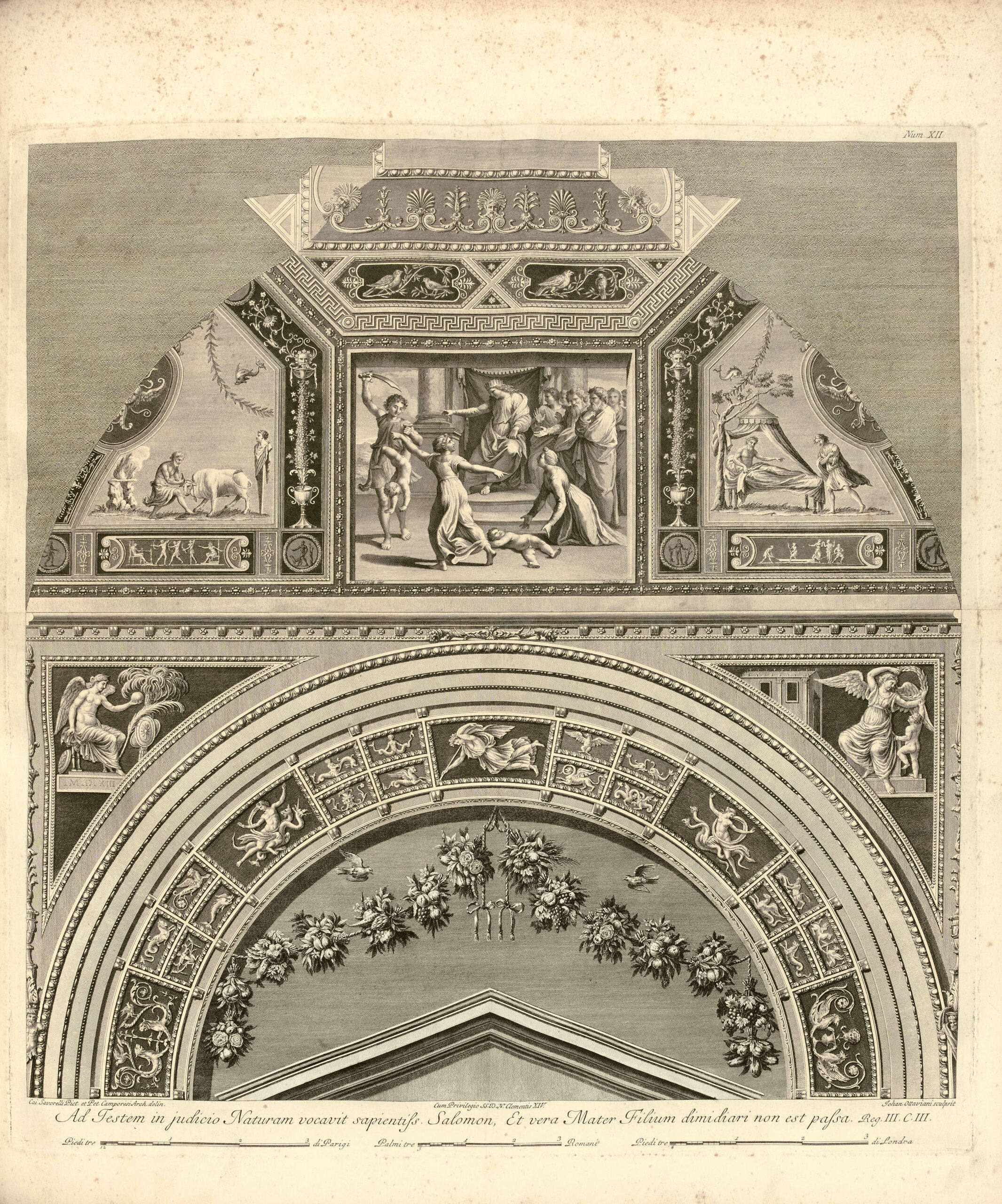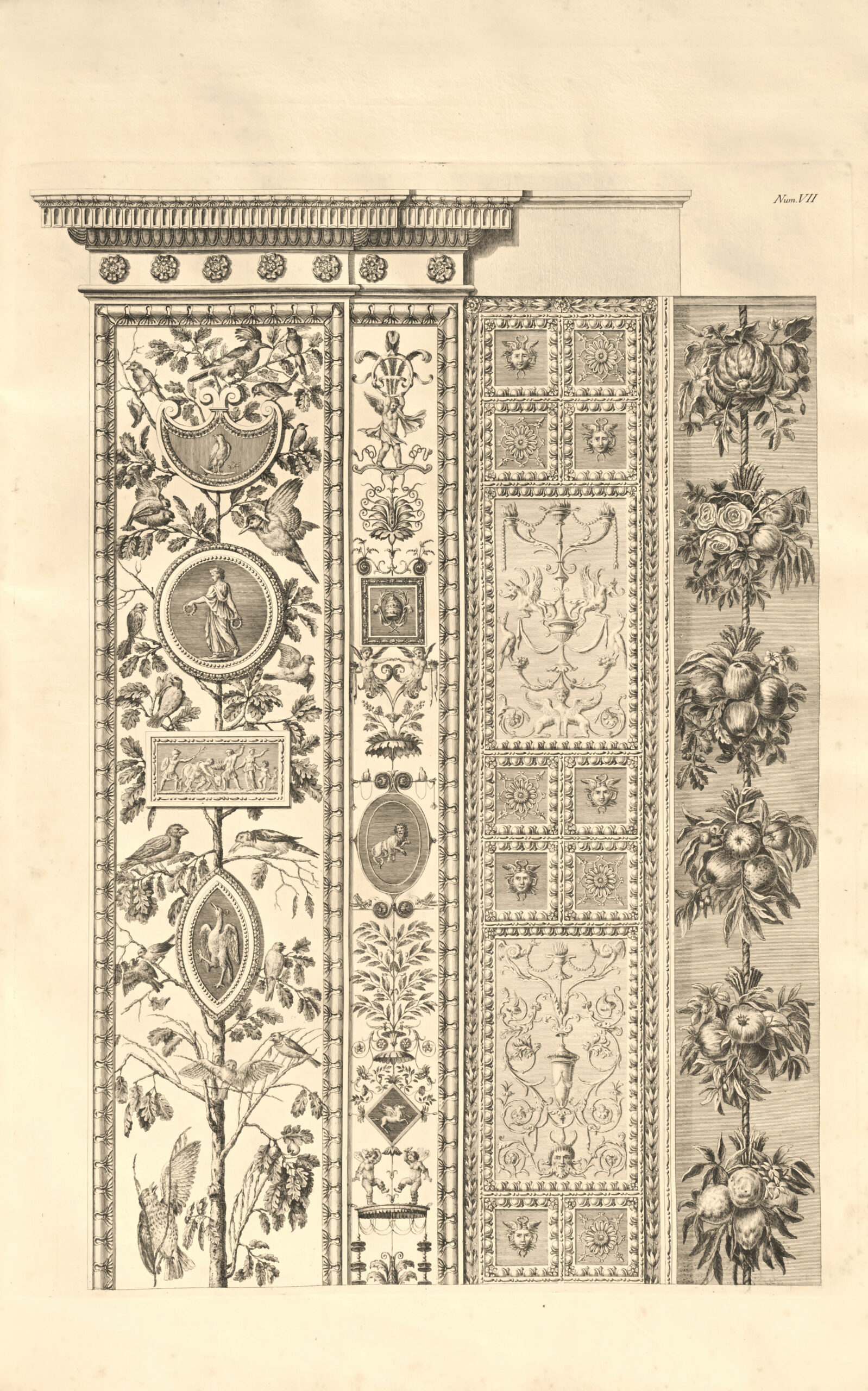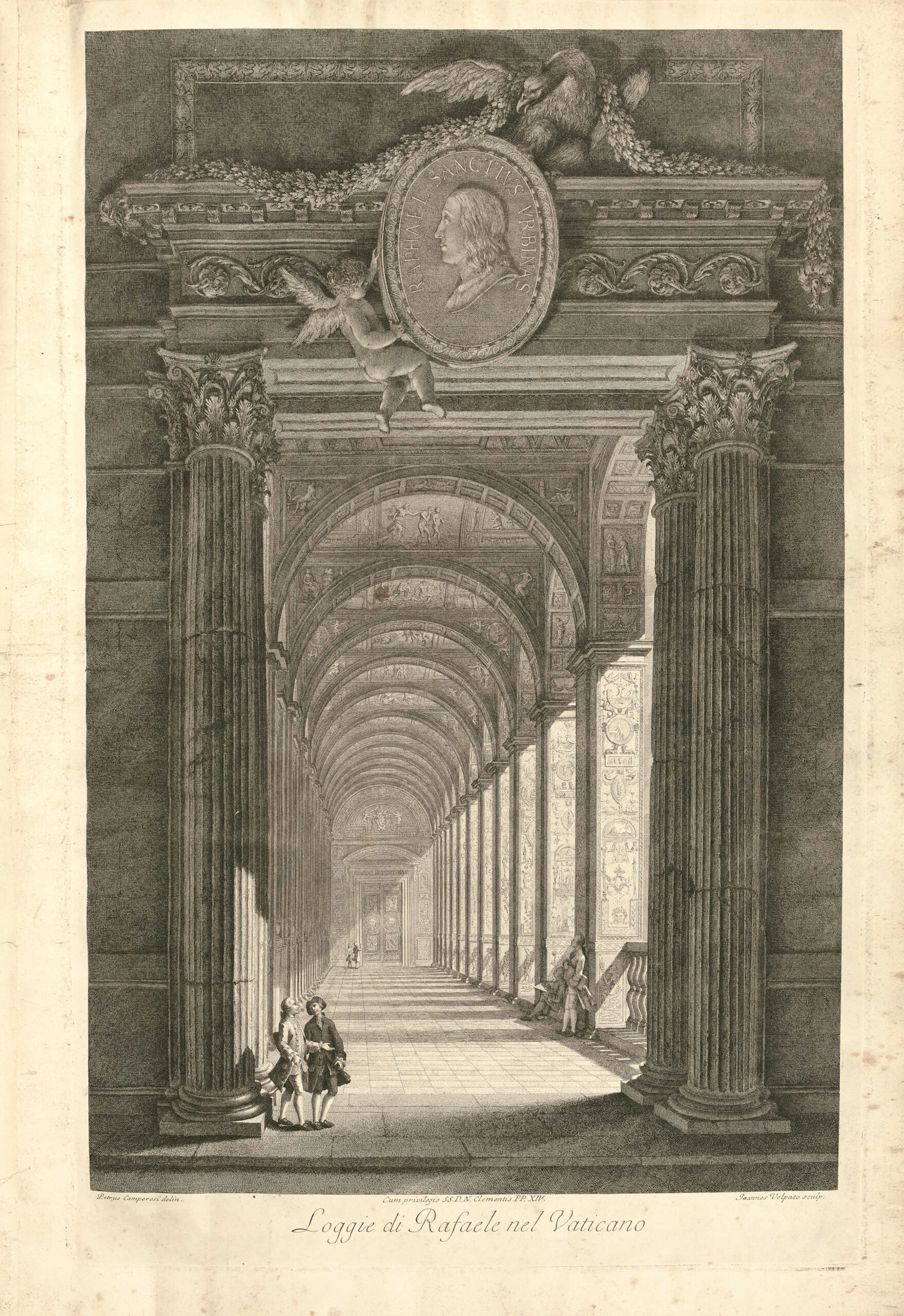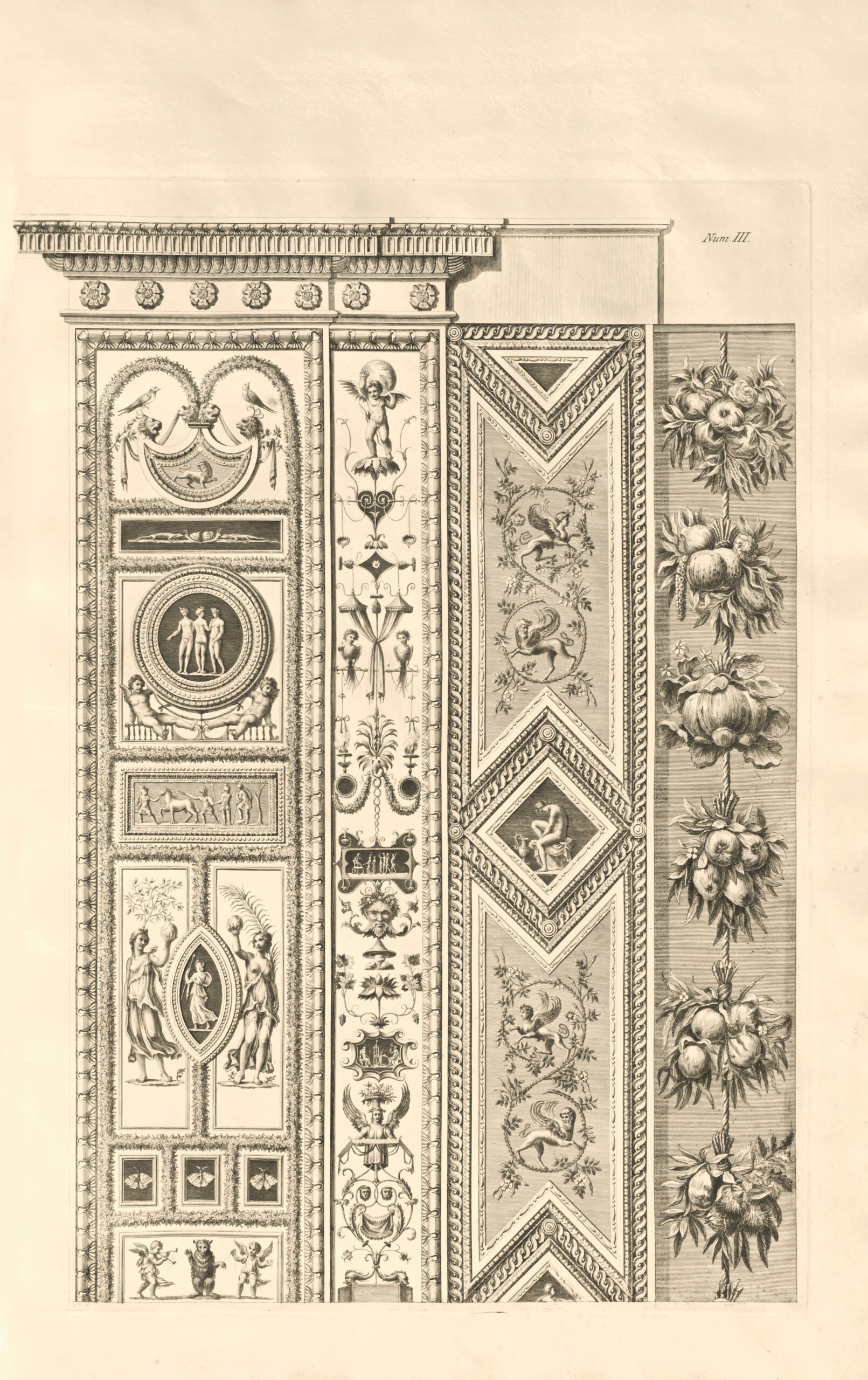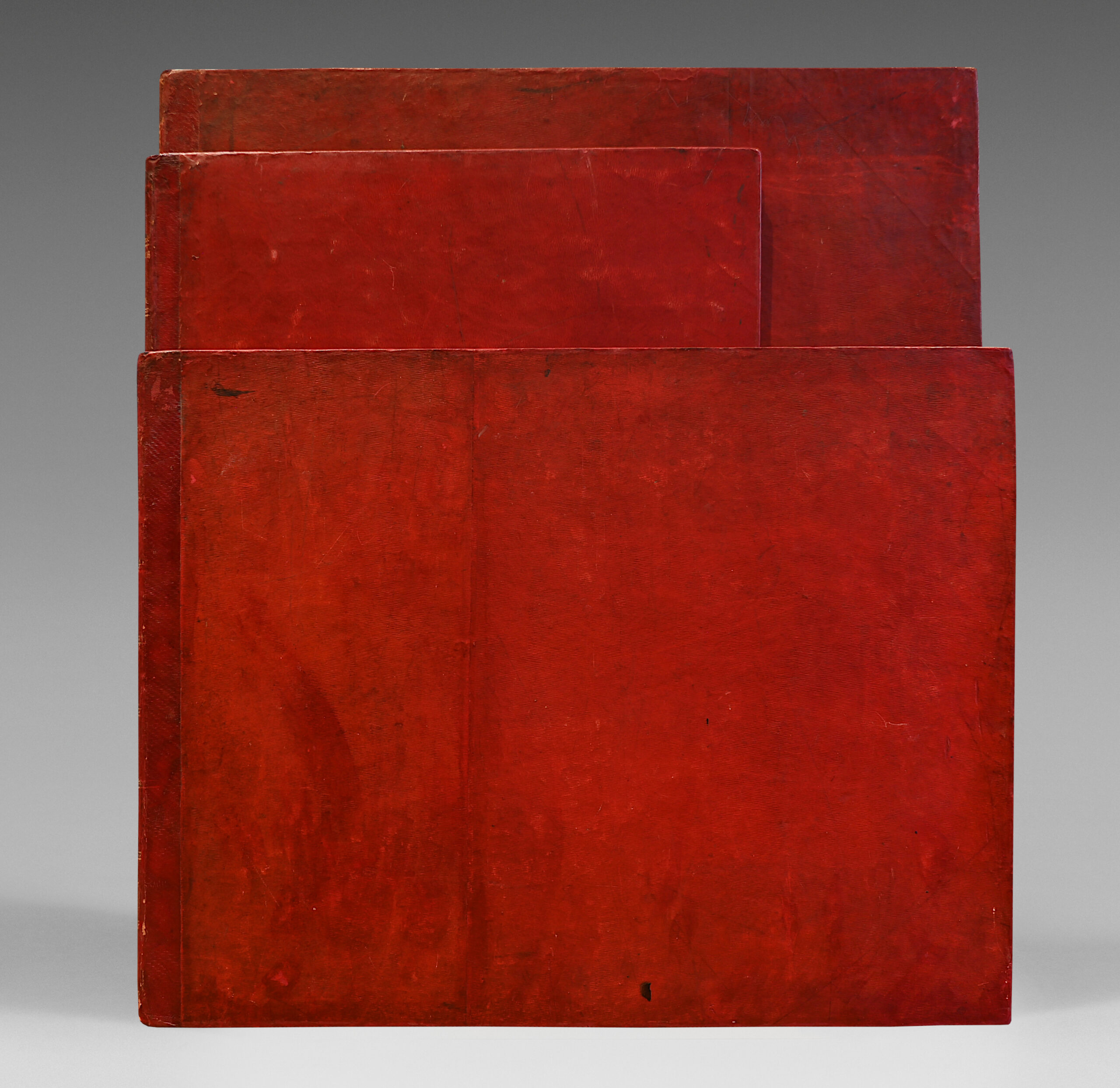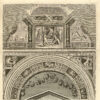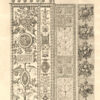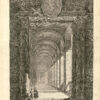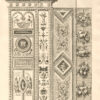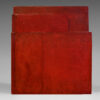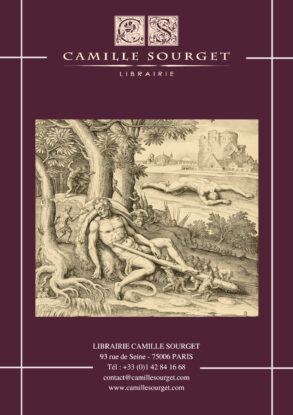Roma, Pagliarini, 1772-1777.
3 volumes, plano, plano oblong and plano elephant; red quarter morocco, flat spines decorated. Binding from the very end of the eighteenth century.
680 x 475 mm; 525 x 660 mm; 750 x 660 mm.
A sumptuous collection of Raphael’s work.
Brunet, IV, 1110.
A splendid work reproducing the decorations of the second floor of the Loggias of the Vatican palace, which Raphael (1483-1520) built for Pope Leo X in 1514 and decorated in 1518 and 1519 with his assistants Giulio Romano and Giovanni da Udine.
Published in three parts between 1772 and 1777, it is the first attempt to show the entire decorative scheme of the pilasters and pillars in the famous “Loggia” of the Vatican.
A frontispiece and 57 large engraved plates, some folding, including:
– a triple folding plate representing a plan and a section (about 48 x 175 cm),
– 4 plates representing the doors (about 80 x 48 cm each, numbered A and B),
– 28 plates representing the stuccos and grotesques (about 110 x 48 cm each, numbered I to XIV),
– 13 plates representing the ceilings (about 71 x 71 cm numbered I to XIII),
– Terza ed ultima parte delle Loggie di Rafaele nel Vaticano, che contiene il compimento degli ornati, e de’ bassi-rilievi antichi esistenti nelle Loggie medesime]: 1 title and 11 (out of 12) plates in two sheets each representing the stuccoes and grotesques (about 110 x 48 cm each).
This is the third part of this series, whose plates present the Vatican’s door frames, drawn by Ludovicus Teseo Taurinensis after Raphael and engraved by Joannes Vaolpato. The plates are dated between 1774 and 1776.
Brunet, IV, col. 1110 ; Guilmard, Les Maîtres ornemanistes, 1880, p. 283.
The favorite painter of Julius II, Raphael’s fortune and fame were to increase with the accession of Leo X to the papal throne in March 1513.
The pope made Raphael his advisor, the organizer of his festivities and gave him the succession of Bramante in the direction of the works of St-Peter.
Promoted to Pope’s architect in 1514, the artist was ordered to continue the galleries called the Loggias, which had barely begun.
It was for the vaults of the second floor portico that he composed the famous suite of 52 drawings on biblical subjects in 1519.
The collection of Raphael’s works is a testimony to the harmony and extraordinary imaginative richness of the artist in the decoration of the stuccoes, ceilings and vaults of the Vatican gallery.
A precious collection of architecture rare in a uniform quarter-morocco of the time.
